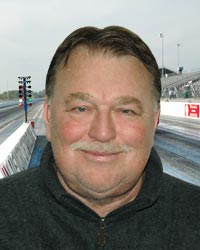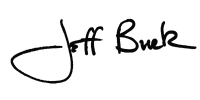|
|||||||||||||||||||||||||||||||||||||||||||||||||||||

In search of drag racing’s elusive “level playing field”
7/14/06

Let me throw a few numbers at you: 50, 34, 32, 29, 24, 20 and finally 15. No, those aren’t the numbers for the safe here at DRO headquarters located on the top floor of the fabulous two-story tower known as the Phlegm Building.
No, dear readers, those numbers actually represent the various maximum amount of overdrive IHRA has allowed its supercharged Pro Modified racers to spin their superchargers since the IHRA started the class over 15 years ago. Each rule changes to decrease the maximum overdrive allowed adopted over the past decade and a half has been a futile effort to equalize the performance potential of a nitrous Pro Mod and a supercharged Pro Mod. History has proven that reducing the overdrive limit was a bandaid for the problem at best and a total failure at worst.
Perhaps those involved should have realized long ago that a nitrous Pro Mod (which is essentially an IHRA Pro Stock car with nitrous oxide injection) and a supercharged Pro Mod (which is essentially a left-hand steer alcohol Funny Car) are just two different race cars and cannot be made to perform at the same level.
The only verifiable and permanent result accomplished by all those rule changes over the years was that they forced the supercharged racers to spend hundreds of thousands of dollars in R&D to compensate for the rule changes and retrieve the lost power they caused- something that the nitrous racers have not had to do. As far as changing the history and competitiveness of the class despite numerous rule changes the same names still appear in the winners circle and the World championships and national event wins for nitrous and supercharged racers are fairly equal and that is a fact. I will concede that the rule changes adopted over the years may have made the racing more equal on
Sunday.
It is a fact that in qualifying performances the supercharged racers (except for the year IHRA banned superchargers in the class) have always had an advantage. You can make the same case if you compare the performances of IHRA Pro Stock cars versus IHRA alky Funny Cars. Again I think we are comparing apples and oranges. There are as many different “Pro Mod” cars as there are sanctioning bodies for them.
This morning I received several calls from IHRA pro Modified teams who swore to me that IHRA tech director Mike Baker has let it be known that by the first of September 2006 the supercharger overdrive maximum will be reduced from 20 percent to 15 percent. Nothing has been officially confirmed by the IHRA, but, based upon the way the they’ vet has done business in the past and the recent dearth of nitrous cars qualifying for IHRA national events compared to supercharged cars, another change in rules is to be expected.
The real question is what will yet one more overdrive reduction for supercharged engines accomplish either in the short or long term? If history is any indicator, the rule change will take a couple of hundred horsepower away from the supercharged cars slowing them down for a period of time making the nitrous cars more competitive as far as qualifying is concerned.
As for the long term effects, as they have for more than 15 years, the supercharged racers will just be forced to buy new superchargers, change pistons and or rods for more compression, adjust fuel volume and timing, change tires, gear ratios spend more time on the dyno, get better flowing heads and spend a ton of time and money. If the rumored overdrive reduction becomes reality they’ll probably lose 200 hp right away and get 100 of it back quickly and the rest by the start of next season. And the cycle will start all over again just as it has every time there is a rule change.
The real issue here, it appears to me, isn’t the rules, it is that the whole IHRA Pro Mod program is inherently flawed: from the rules, to the two night qualifying sessions, to treating supercharged and nitrous injected as if they were IROC or NASCAR car where a spoiler, restrictor plate or carb change can equalize them instead of understanding that the two types of cars share nothing in common.
This whole mess has never been about winning races, as I’ve pointed out many times. It is about qualifying. You can check the stats of the class and see that on race day over the course of a season the two classes are about even. But qualifying is a different matter altogether, especially when the blown cars get two opportunities to qualify in cool night air with the track in optimum condition. Two night sessions are a definite advantage for the supercharged racers and not for the nitrous racers. And I’ll make this prediction: if the air and track temps are cool and the corrected altitude is around 1,000 feet, during a night session even with 15% overdrive a supercharged engine will make more power than a nitrous oxide injected one and blower cars will have an advantage.
For whatever reason, the nitrous cars seem to have peaked as far increased overall performance goes. The best speeds and ET’s for these cars haven’t changed much in the last two or three years. As for the supercharged cars they are just now getting back to the level of performance they enjoyed in 2004 when the last supercharger overdrive reduction was put into effect and I will concede they have a performance advantage.
|
There are three facts I think we can all agree on. (1) Based on history and performance numbers, supercharged Pro Mods have and always have had an advantage in qualifying and setting records. (2) Nitrous racers are never going to be happy as long as they know they are at a disadvantage when it comes to qualifying. (3) Having the quickest and fastest car Saturday night is nearly never an indication of who or what type of car will win on Sunday.
I believe the solution here is both obvious and simple: Split the classes up just for qualifying ensuring eight nitrous cars and eight blown cars in the program for Sunday’s eliminations. Doing this will give the under-powered nitrous racers a break. They won’t have to worry about getting bumped by a blown car making a Saturday night “Banzai” lap and being forced to burn up an engine trying to bump back into a field. If the nitrous racers don’t like that then break the field up into two classes like they have at Kenny Nowling’s ADRL. The fans and racers don’t seem to mind over there
I say leave the rules for the blown cars just where they are so that Pro Mod fans might finally see that legal five-second Pro Mod passes that we’ve all been waiting to see.
It’s time for nitrous racers to quit spending there time lobbying Mike Baker to make rule changes that never really accomplish what they are supposed to do and only serve to polarize the racers, fans and the class. Drag racing long ago discovered that Top Fuel cars and Funny Cars can’t compete against each other and it seems pretty obvious that neither can nitrous and supercharged Pro Mods. It’s time we all accepted that and moved on. ![]()

